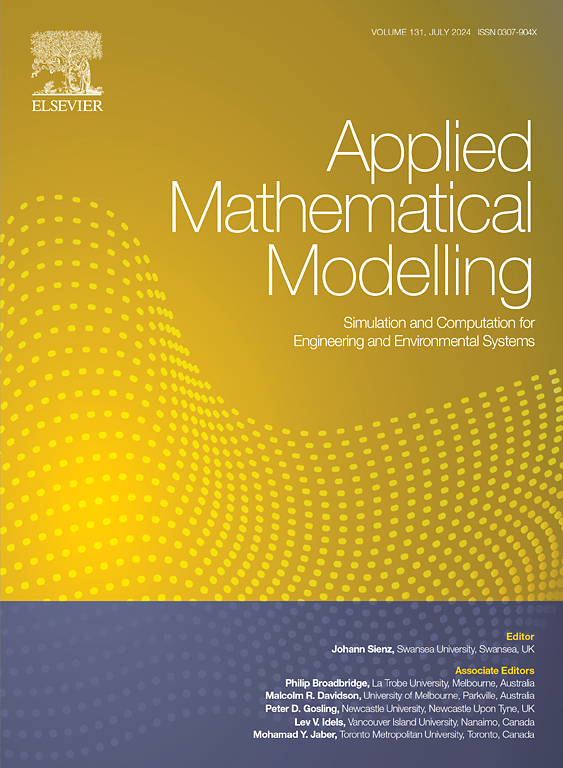Dissolution of variable-in-shape drug particles via the level-set method
IF 4.4
2区 工程技术
Q1 ENGINEERING, MULTIDISCIPLINARY
引用次数: 0
Abstract
In this work, we deal with a mathematical model describing the dissolution process of irregularly shaped particles. In particular, we consider a complete dissolution model accounting for surface kinetics, convective diffusion, and relative velocity between fluid and dissolving particles, for three drugs with different solubility and wettability: theophylline, griseofulvin, and nimesulide. The possible subsequent recrystallization process in the bulk fluid is also considered. The governing differential equations are revisited in the context of the level-set method and Hamilton-Jacobi equations, then they are solved numerically. This choice allows us to deal with the simultaneous dissolution of hundreds of different polydisperse particles. We show the results of many computer simulations which investigate the impact of the particle size, shape, area/volume ratio, and the dependence of the interfacial mass transport coefficient on the surface curvature.
求助全文
约1分钟内获得全文
求助全文
来源期刊

Applied Mathematical Modelling
数学-工程:综合
CiteScore
9.80
自引率
8.00%
发文量
508
审稿时长
43 days
期刊介绍:
Applied Mathematical Modelling focuses on research related to the mathematical modelling of engineering and environmental processes, manufacturing, and industrial systems. A significant emerging area of research activity involves multiphysics processes, and contributions in this area are particularly encouraged.
This influential publication covers a wide spectrum of subjects including heat transfer, fluid mechanics, CFD, and transport phenomena; solid mechanics and mechanics of metals; electromagnets and MHD; reliability modelling and system optimization; finite volume, finite element, and boundary element procedures; modelling of inventory, industrial, manufacturing and logistics systems for viable decision making; civil engineering systems and structures; mineral and energy resources; relevant software engineering issues associated with CAD and CAE; and materials and metallurgical engineering.
Applied Mathematical Modelling is primarily interested in papers developing increased insights into real-world problems through novel mathematical modelling, novel applications or a combination of these. Papers employing existing numerical techniques must demonstrate sufficient novelty in the solution of practical problems. Papers on fuzzy logic in decision-making or purely financial mathematics are normally not considered. Research on fractional differential equations, bifurcation, and numerical methods needs to include practical examples. Population dynamics must solve realistic scenarios. Papers in the area of logistics and business modelling should demonstrate meaningful managerial insight. Submissions with no real-world application will not be considered.
 求助内容:
求助内容: 应助结果提醒方式:
应助结果提醒方式:


